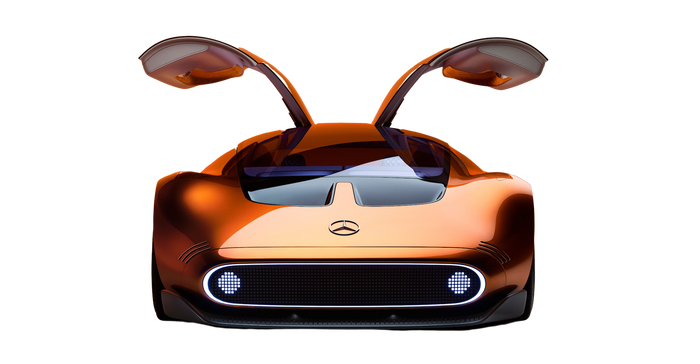Mercedes Vision One-Eleven Concept Electrifies the Future
Mercedes has produced a tribute to the classic C 111 test car of the 1970s.

Mercedes-Benz Vision One-Eleven concept car.Mercedes-Benz
Mercedes-Benz has turned to one of its most influential vehicles ever for inspiration when developing the Vision One-Eleven concept car: the company's legendary C 111.
That car served as a test platform for alternative drivetrains in the 1960s and '70s, with first a Wankel rotary engine and then a turbo-diesel when efficiency became the priority.
In addition to setting records, the C 111 made an indelible impression on enthusiasts through its sleek styling, gullwing doors, and plastic composite bodywork.
This 2023 edition of the car is naturally propelled by electrons rather than hydrocarbons, courtesy of a YASA axial-flux electric motor.
Mercedes also claims advances in the Vision One-Eleven's high-performance battery cells.
At the same time, Mercedes casts a glance backward to the original C 111, with the Vision One-Eleven's orange bodywork and the pixelated dashboard display. The car also wears pixelated displays across its front and rear ends.
“Our goal at Mercedes-Benz is not to do styling – our goal is to create icons," explained Gorden Wagener, Chief Design Officer for the Mercedes-Benz Group. "To me, that makes the difference between mainstream design and luxury. Design icons like the Type 300 SL and C 111 – both with gullwing doors – are part of our DNA. These legendary vehicles were major inspirations for the iconic design of the Mercedes-Benz Vision One-Eleven."
The Mercedes C 111 Was Futuristic Perfection
Another futuristic detail is Vision One-Eleven's use of Magic Leap 2 augmented reality glasses to provide the driver with supplemental information.
For all the details on the slippery new Mercedes concept car, click through the photo gallery.
About the Author(s)
You May Also Like





